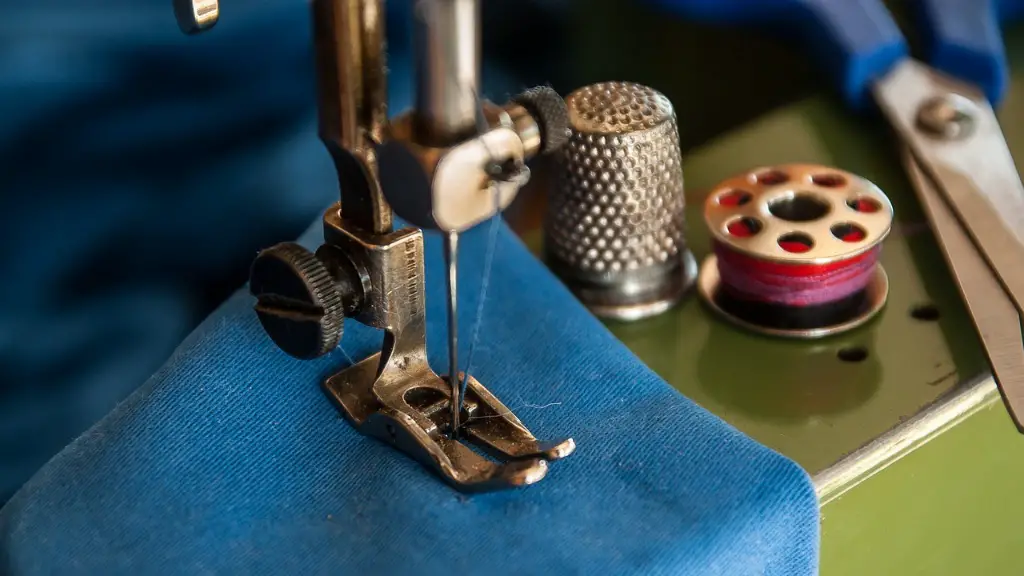Introduction
Struggling with tension on your sewing machine? Don’t worry, it happens to almost everyone. Most issues can be easily solved with a few simple steps. With the right fixes and adjustments, the tension on your sewing machine can be restored in no time. To have a complete understanding on how to fix the tension on your sewing machine, it is important to first have a grip on the basics, such as materials and tools needed, as well as the common tension issues.
What Materials and Tools Do I Need?
First things first – you need the right materials and tools to be able to fix the tension on your sewing machine. These include: a new needle of the correct size and type for your fabric, a threader, needle-nose pliers, bobbins, a pin cushion, and of course thread.
Common Tension Issue
The common tension issues that one may experience with a sewing machine are an irregular stitch or an uneven stitch, stitch “loops” or skipped stitches, too much thread showing on the backside of the fabric, or too much thread showing on the bobbin case. If you have been experiencing any of the above issues with your sewing machine, it is likely that you need to adjust the tension.
The Fix
When it comes to fixing the tension on your sewing machine, there are a few steps to take.
First, make sure your sewing machine needle is the right size and type for the fabric you are using. Using the wrong needle can have an effect on the tension.
Next, check your thread tension. Start by loosing the tension and slowly increase it again until your tension dial reads the number that is recommended for your fabric. If you are having difficulty adjusting the tension, try re-threading the machine.
To make sure everything is working properly, trace a simple practice stitch on some scrap fabric. This will allow you to check for even tension and the correct stitch length.
Additional Tips
Here are some additional tips that may help when fixing sewing machine tension:
– Make sure that your machine is clean and free of lint. Excess lint can cause tension issues.
– Change your needle every several projects or when you switch fabrics as needles can become dull after extended use or when used on different fabrics.
– Make sure you are using the right thread for the job. Using too thick of a thread for a lightweight fabric or a too thin of a thread for a thick fabric can cause tension problems.
– Finally, if none of the above tips help, take the machine to a professional for servicing.
Using the Right Foot
One often overlooked tool that can help with tension problems on your sewing machine is the right foot. Different feet are built for different tasks, and knowing when and how to use them can help with tension issues. For instance, using a rolled hem foot allows fabric to move easier through the machine and prevents tension build-up.
Changing the Bobbin Tension
The bobbin tension should be adjusted every time you replace it. If you notice any thread loops forming on the underside of the fabric, the bobbin tension may need to be adjusted. To adjust the bobbin tension, use a screwdriver and tighten the tension screw slightly until the loops disappear.
Replace the Needle Plate
The last resort for tension issues is to replace the needle plate. If your needle plate does not fit your sewing machine, tension issues will occur. To replace the needle plate, it is best to refer to the manual that came with your machine. If your manual is lost or damaged, you can always contact the manufacturer and get another one.
Checking and Resetting the Thread Tension
When it comes to checking and resetting the thread tension, it is important to pay attention to the thread tension dial. This will tell you how much tension needs to be adjusted. To increase or decrease tension, simply turn the dial clockwise or counterclockwise.
When you have adjusted the tension, it is important to check whether the stitches are straight and even on both sides. If they are not, further tension adjustment may be required.
Using a Thread Stretcher
Using a thread stretcher can make a huge difference in the tension of a sewing machine. The tool works by stretching the thread before it is fed into the sewing machine, which helps to prevent it from becoming slack. This tool can be particularly useful when sewing with heavy fabric.
Cleaning the Sewing Machine
Cleaning the sewing machine is one of the most important things you can do to ensure the longevity of your machine and to help prevent tension issues. Oils, dirt, and other debris can accumulate inside the machine during use and can cause tension problems if not cleaned properly. It is best to refer to the user manual for instructions on how to clean the machine.
The End Result
Overall, fixing the tension on a sewing machine can be tricky. However, by understanding the basics, using the right tools, and following the steps explained above, you will be able to successfully fix the tension on your sewing machine.



